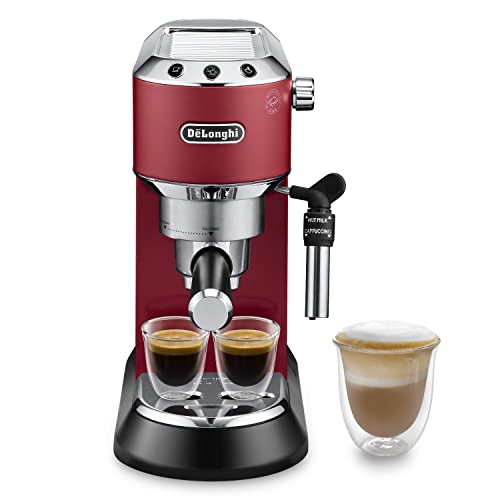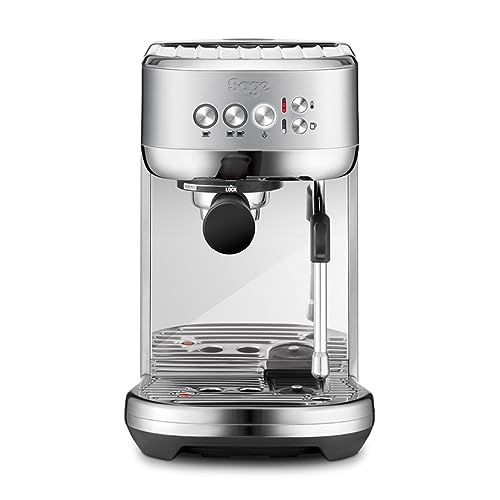9 Things Your Parents Teach You About Machine Espresso
페이지 정보
작성자 Chanda Elledge 댓글 0건 조회 4회 작성일 25-02-13 01:42본문
 How Does Machine Espresso Work?
How Does Machine Espresso Work? Machine espresso makes use of precise pressure and mind-blowing filter technology to create the coffee we love. But how exactly does it work?
Machine espresso makes use of precise pressure and mind-blowing filter technology to create the coffee we love. But how exactly does it work?Espresso is made by forcing hot water at high pressure through finely ground coffee. The process is similar to making drip coffee but the major difference is in the pressure.
The Group Head
The group head is the portafilter is inserted when you are making home espresso machine. It is responsible for dispersing water into the portafilter, and controlling the pressure of the resulting extraction. There are numerous kinds of group heads each with their own advantages and drawbacks. Some are focused on temperature stability, others on pre-infusion options, and others are designed to control the lever. There are also some that include a mix of features, such as the E61 that is the classic choice among many baristas due to its ability to provide multiple benefits in one package.
As you can see in the above photo the group head is made up of numerous notches that you can put your portafilter, then twist it manually bean to cup espresso machines secure it. A gasket made of rubber is positioned within the notches to create a seal while you insert your portafilter. The notches on the head allow for a precise positioning of the portafilter which is crucial to ensure an efficient extraction.
Apart from allowing you easily place your portafilter in, the group head is responsible to maintain an even temperature. This is done by cycling hot water around the portafilter and through the brew-basket to ensure that the temperature is at the right level for extraction. It is important to note that even a tiny deviation can make the difference between a great and a great best espresso maker.
The Pump
Contrary to manual piston machines which use a lever to pressurize water, rotary espresso machines rely on motorized pumps to supply the nine atmospheric bars of pressure needed to extract espresso. This pressure is generated by pumping water through a heat-exchanger and then through the ground coffee.
Pumps are typically less expensive than piston-driven machines, and tend to last longer. However, both types of machines may be damaged by excessive use and inadequate cleaning. They also increase the complexity of mechanical systems that can lead to an expensive price for even the simplest models.
Some espresso machines can eliminate the pump completely and instead make use of steam pressure to make espresso. This can cause over-extraction because the boiler that produces steam also warms the water to boil. These machines also have to continually rebuild their pressure between cups. This takes energy and time.
Many espresso machines utilize a vibration or rotary pump, which has a vibration model that uses a vibrating disc to create pressure and rotating models that push hot water through the grounds under high speed. Both machines can make great espresso but rotary machines are more quiet, durable and less likely to break down.
The Boiler
The boiler is the element that heats the water to the ideal temperature for extraction. The steam produced reaches the portafilter, which holds the espresso grounds. It is then poured into the cup. During this process the steam causes enough pressure to push the grounds of the coffee through. This creates a layer crema on top. This is one of the hallmarks of a great espresso.
There are three types of espresso machines, each with distinct pumps and the temperature of the brew. There are a variety of ways to control the brew as well as the size of cup that can be made by the machine.
The first espresso machines (news) were steam types. The earliest espresso machines were steam types. The coffee tasted bitter and burnt. This is the reason Milanese manufacturers Luigi Bezzerra and Desiderio Pavoni invented the modern espresso machine.
The most well-known espresso machine is a semiautomatic that has an electric pump. When people think of espresso machines, they picture these machines. Semi-automatic machines require you to grind and tamp the beans yourself, but the pump regulates the flow of water and pressure. This is a perfect solution that combines human control with mechanised reliability.
The Filter
Typically, espresso machines utilize a filter to separate out the coffee grounds as they pass through the hot water. The filter is also a crucial part of the temperature control system because it stops the machine from overheating.
It also improves flavor, since a filter lets you enjoy a longer bloom phase. This allows beans to let their nuances out and provides an opportunity for a better extraction.
However, it is important to keep in mind that even a good filter can result in a poor cup of coffee, as the quality of the beans and extraction are important.
It's in this area that the magic occurs. This is the reason why espresso tastes so delicious. The grouphead, also referred to as the brew head, is where the portafilter (the container you place the ground coffee into) is located when you're making espresso.
Steam-driven espresso machines make use of hot water that is heated in an airtight container to make steam. The steam then moves hot water through the coffee grounds under high pressure. These kinds of machines are generally less expensive and easier to maintain than pumps-driven models. They are however limited for creating the ideal brewing conditions as they only operate with 1-1.5 bar of pressure. The ideal shot requires 9-10 bars.
In recent years, espresso machines compressed-air-pump-driven espresso machines have been gaining popularity. They make use of an air compressor to push hot water across the ground and are much more mobile than electric steam-driven espresso makers machines.
댓글목록
등록된 댓글이 없습니다.